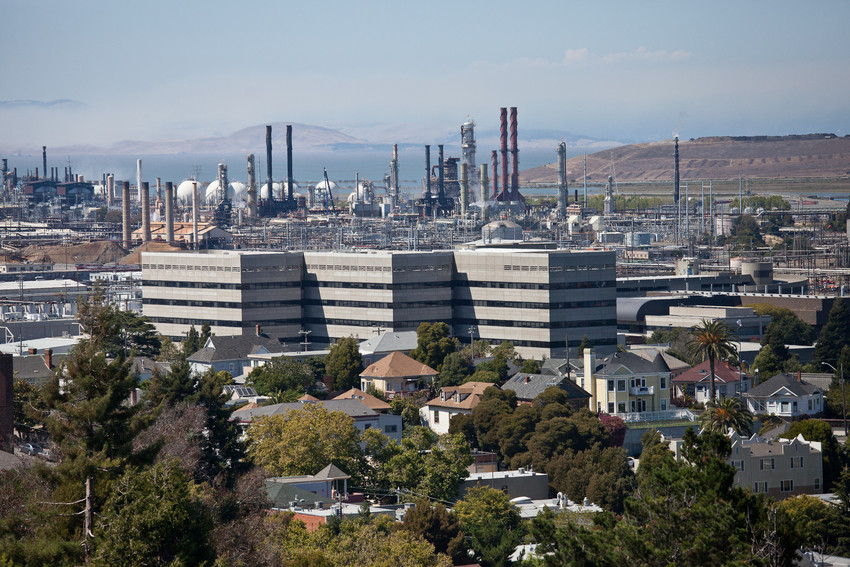But the reports do not explain what led to those high toxic gas levels, disappointing Randy Sawyer, the county's chief environmental health and hazardous materials officer.
"They did not address that issue," Sawyer said in a recent interview.
He asked the refinery why abnormally high amounts of hydrogen sulfide were detected by one of Chevron's air monitors in Point Richmond after at least one of the flaring incidents. Last week Chevron told his office that it had not completed its investigation into that issue.
First Malfunction
The initial refinery breakdown took place at 11:45 p.m. on Dec. 27 when a gas compressor tripped offline.
The company says the problem centered on a tank known as a liquid knockout drum -- a unit that strips liquid from gas before it enters a compressor. A line that automatically empties the drum became clogged.
Flow was restricted due to plugging in the 2-inch line, Chevron's report stated.
Too much liquid then filled the tank. That high liquid level triggered an alarm, shut down the flare gas compressor for an hour and activated the refinery's backup flaring system.
"There's always the potential for goo to plug up a line," said Eric Smith, associate director of the Tulane Energy Institute. Smith read the company's reports for KQED and specializes in oil and gas production.
Chevron did not say what caused the line to get clogged, which troubles Sawyer.
"You would like to find out what caused the plug so you can prevent that from happening," Sawyer said. "It does not look like they're investigating what actually caused the plug."
To avoid a repeat, the refinery is considering making its alarm system in its knockout drum more sensitive to the presence of liquid and adding a flow meter that could give a heads up before a similar line gets clogged.
Second Malfunction
The second problem took place 16 hours later, lasted much longer and was the result of human error.
As the refinery was restarting a unit that was shut down for maintenance, a compressor became "starved for gas, which is why it started surging and acting up," Smith said. "The compressor had nothing to compress."
The lack of high pressure activated the flaring system. Crews shut down the compressor, a closure that lasted more than three days.
Chevron later learned that the problem centered on a device placed between two sections of pipe used to isolate the system during maintenance. A steel plate, called a blind flange, was left in the line that was feeding gas to the compressor after repairs were complete and the compressor had been reinstalled, the company said.
Chevron's standards call for such devices to have "T" shaped tabs so they're easily recognized. But, the blind flange used in this case did not have that tab.
That's because, the company's report found, when the refinery "turnaround" took place, one contracting company wasn't aware of the refinery's protocol.
"The original contracting company knew the blind installed was different than the Chevron standard but failed to communicate this information," the company's report said.
The episode prompted the refinery to make sure all such devices were correctly identified and lectured contractors to ensure they're abiding by Chevron's standards regarding flanges.
